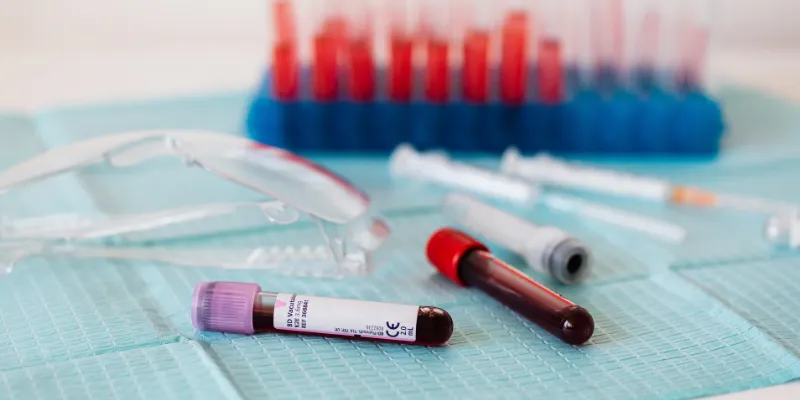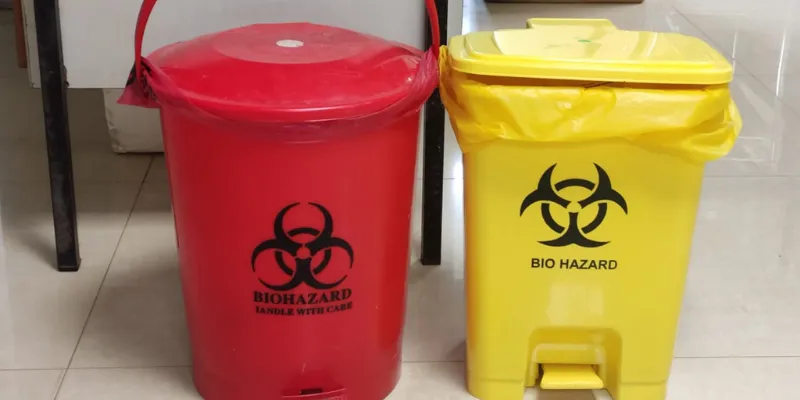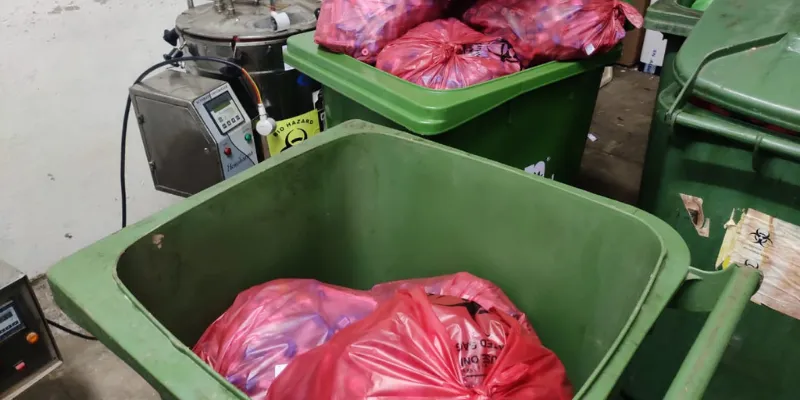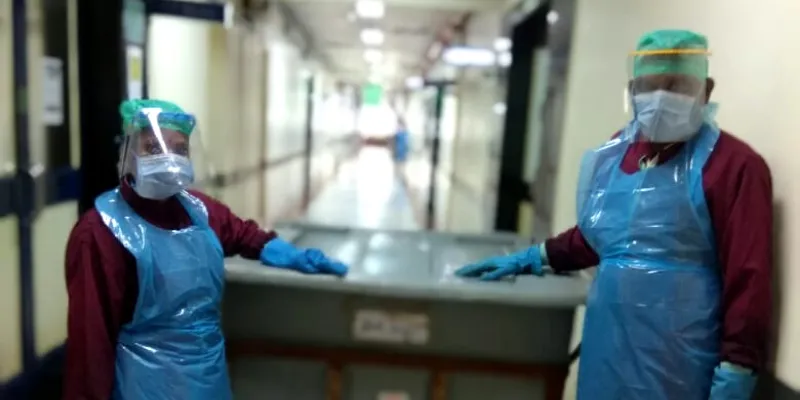How hospitals and diagnostic labs across India are managing biomedical waste amidst COVID-19
Diagnostic labs and hospitals across India are taking extra care while handling and treating biomedical waste, owing to the quick transmission of COVID-19 through touch and surfaces.
Biomedical waste is a termed used for any kind of trash that contains infectious items. Usually generated in healthcare units and hospitals, it includes human tissues, blood samples, used bandages, body fluids, contaminated cotton, expired medicines, and other sharps objects like needles, scalpels, and blades.
If not managed scientifically, this waste can cause a great deal of harm not only to the environment but also to human health. From AIDS, Hepatitis B and C, severe acute respiratory syndrome (SARS), tetanus, to psychosocial trauma, exposure to unsterilised or untreated biomedical waste can give rise to a slew of ailments in people.

If biomedical waste is not disposed of properly, it can damage both the environment and human health.
Image credit: Pexels, Karolina Grabowska.
According to a study published by Statista in 2018, around 530 metric tonnes of biomedical waste is spawned every single day in India.
In today’s age and time, the proper handling and treatment of these waste have become all the more important, owing to the quick transmission of the novel coronavirus through touch and surfaces.
Right after the outbreak of the COVID-19 pandemic, Deepak Saxena, Professor at the Indian Institute of Public Health, said,
“The practice of indiscriminate disposal of biomedical waste can be a potential source of infection of COVID-19 to municipal workers and the community at large.”

It is imperative to handle used PPE kits and masks with utmost care
Image credit: Unsplash, Mufid Majnun
Though India is already being governed by the Biomedical Waste Management Rules, 2016, the Central Pollution Control Board (CPCB) — a statutory organisation under the Ministry of Environment, Forest, and Climate Change — released a set of guidelines to ensure the proper management of COVID-19 waste.
The most recent revision to the protocols was made on July 21, 2020, and has been deemed applicable to multiple stakeholders, including isolation wards, quarantine centres, sample collection centres, laboratories, Urban Local Bodies (ULBs), and common biomedical waste treatment and disposal facilities (CBWTFs).
The revised guidelines have mandated the implementation of several measures like the use of colour-coded bins for segregation, dedicated trolleys for transportation, separate rooms for collection and storage, etc. At present, most of the healthcare facilities, sample collection centres, and laboratories that are testing for the SARS-CoV-2 virus or treating individuals infected with it, are trying to follow the rules laid out.
Sticking to the CPCB guidelines
Biomedical waste generally consists of biodegradable and non-biodegradable items. While the biodegradable ones mainly include blood samples, human cultures, and body tissues, the non-biodegradable materials consist of syringes, wrappings, foil, glass, and plastic pieces.
The guidelines have laid down precedents for the collection and segregation of both types of waste.

Colour coded bins placed at Anand Diagnostic Lab.
Anand Diagnostic Laboratory in Bengaluru, which has been putting its best foot forward in testing for the virus since March this year, claims to be following it diligently.
“We have kept separate colour-coded bins everywhere, including the coronavirus testing areas, to segregate the waste according to their nature. All the biodegradable COVID-19 trash goes into the yellow bins, and whatever cannot be decomposed easily, goes into the red ones. To prevent leakage, we have also put in place double-layered bags in the bins,” says Sampath Abhishekam, Consultant for Lab Safety and Services, Anand Diagnostic Laboratory.
For instance, the lab ensures that safety gears, including goggles, face-shield, splash-proof apron, plastic coveralls, hazmat suits, and nitrile gloves, are placed in the red bin. Items that are non-plastic or semi-plastic like masks, caps, shoe covers, and disposable linen gowns, are discarded in the yellow containers by the staff.

Biomedical waste stored at a separate facility in the lab.
Besides this, the lab has placed puncture-proof containers specifically to throw away sharp objects such as needles and syringes, so that these are handled with extra care and not cause injuries to municipal workers or waste pickers.
Once the waste is collected in the two bins, the housekeeping staff at the laboratory shifts it to a temporary storage room in their basement, as mentioned in the guidelines. The discarded material is then disinfected using autoclave — a machine that performs sterilisation under elevated temperature and pressure.
“Before undertaking autoclave, we disinfect the bags with the help of calcium hypochlorite dissolved in water. This is a step that households and commercial entities that generate biomedical waste can also follow,” Sampath adds.

The waste is disinfected before it is handed off to the CBWTFs.
After all the waste is sanitised, hospitals and diagnostic centres hand it off to the CBWTFs, who, in turn, load it onto their vehicles to be taken for further processing.
Sweety Mandot, the Head of Operations at Bhatia Hospital, Mumbai, says,
“The CBWTFs pay a visit to the hospital almost every day. They, too, have been mandated to use separate containers for COVID and non-COVID waste. We generally keep things ready by the time they arrive. The waste is weighed before handing off, and subsequently, the payment is done.”
CBWTFs play a significant role when it comes to treating biomedical waste and reducing its adverse effects on society. The entity is known to shred and incinerate the human anatomical remains, as well as recycle or sell off the non-biodegradable components like plastic.
While many of the CPCB recommendations remained the same even before the onset of the pandemic, some key differences, including disinfecting bags, labelling the dustbins, the appointment of separate housekeeping staff for the collection of COVID-19 waste, have been made compulsory.

Some of the medical staff members at Bhatia Hospital, Mumbai.
Challenges in handling COVID-19 waste
Many healthcare facilities have been under constant strain in the last few months due to the increased inflow of COVID-19 patients. The additional costs of purchasing life-saving equipment, medicines, testing kits, infrastructural facilities, and other personal protective gears are not small as well.
Reiterating this, Sweety says, “We are spending a considerable amount of money to pay CBWTFs for the biomedical waste generated, and buy PPEs for the medical staff. Additionally, the cost of training and upskilling the healthcare professionals, housekeeping team, and administration staff is not minuscule. It would be very helpful if the concerned government authorities provide concessions or lend a hand to meet these expenses.”

Medical staff shifting the biomedical COVID-19 waste at Bhatia hospital.
Though it has been almost six months since the outbreak of COVID-19, not everyone is aware of the right way to handle and dispose of COVID-19 biomedical waste. In fact, many do not know about the hazards associated with improper management of biomedical waste. Hence, educating citizens is crucial to avoid the spread of infection in the community.
“Large scale awareness campaigns in the form of advertisements through radio, television, newspapers, and posters in local languages about the proper disposal of waste is of utmost significance and needs to be undertaken by the government at the earliest,” notes Dr Nagarekha K, Professor, Vijayanagar Institute of Medical Sciences (VIMS), Bellary.
The proper collection and disposal of biomedical waste is a collective responsibility. And, it is imperative for all the stakeholders to get together to ensure that safety is prioritised at all times, especially amidst a pandemic.
Edited by Suman Singh








